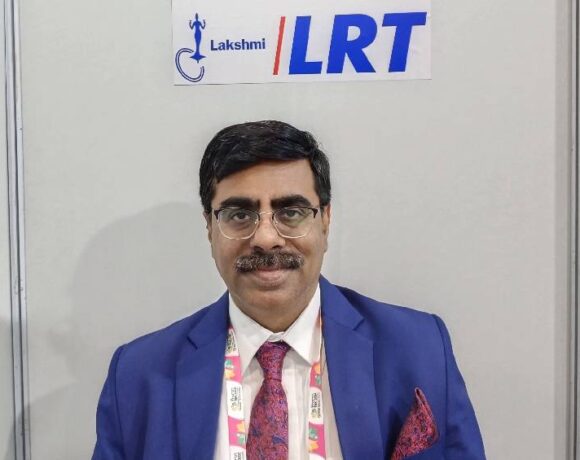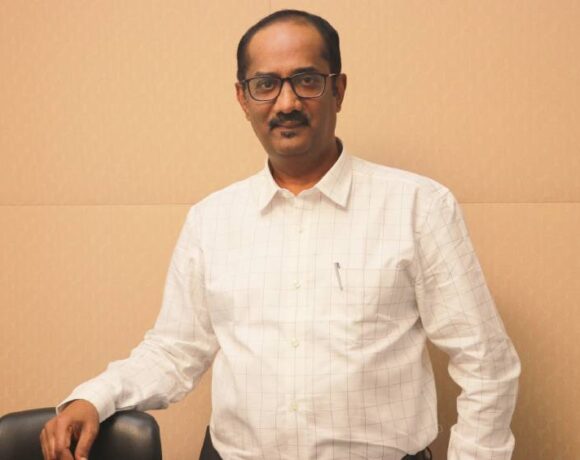‘India Will Become A New Challenger In MMF Segment In The Years To Come’

Gurudas Aras is an Independent Director at Rossari Biotech group and Strategic Advisor at ITA GmbH (Germany), Yamuna Machine Works, Rabatex Industries & Piotex Ventures
You have been in the industry for a long time now. Could you tell us how has the industry transformed over the years?
The textile industry is one of the oldest industries in India dating back to the British era. It’s a very important sector in terms of employment and export potential. In the past, the composite mills were at the core of textile production, but with the government’s faulty policies, weaving and garments production has slowly shifted to a decentralized sector. Over the period, the composite textile mills found it difficult to compete with the small players and started closing down. The last decade saw focus once again coming back to integrated textile production centres and integrated textile parks. Due to self-sufficiency in all kinds of raw materials, availability of labour at a reasonable cost and continued investments in modernizing the production capacities, India has slowly secured a dominant position in the global textile trade. India has done very well in textile made-ups and home textiles but has missed the bus in apparel on the global stage due to smaller capacities and fragmented value chains. However, in the last decade, with the help of the government’s various schemes like TUFs (Technology Upgradation Fund Scheme), the industry has been fairly modernized and hence the quality of the products has also improved considerably.
How is domestic T&A sector placed in the given situation? Tell us about the opportunities and challenges the industry is faced with.
At present, the Indian textile and apparel sector is in a much stronger position than earlier years. Post Covid, there has been a change in the geopolitical situation which favours India. With the China+1 policy of global buyers, India stands to gain some share, although the immediate benefit was taken by competing countries like Vietnam and Bangladesh. India being more cotton-centric and the major global textile trade happening in man-made fibre-based products, India has been at a disadvantage for decades. However, with the government’s focus on promoting investments in man-made fibre-based manufacturing and technical textiles through schemes like PLI, this situation is likely to change gradually. Unlike China, Vietnam and Bangladesh, the garments sector has not been a growth engine for India due to India’s higher cost and inability to give volumes. Moreover, India is positioned mainly in the low and middle-value segments in the global market which is a disadvantage. The domestic textile market has been quite robust over the last few years, although the exports have stagnated.
The major challenges have been the volatile raw material prices, fragmented textile value chain adding to the cost and making it uncompetitive, non-availability of required skilled labour, lower operational productivity and inconsistent quality. The opportunities are plenty due to the increasing acceptability of India as a reliable supplier, China+1 and the US ban on Xinjian cotton-based products giving new market opportunities and the availability of all types of raw materials making it possible to widen the product basket and increasing the global share. The concluded FTAs with Australia and UAE and the ones under discussion with UK, Canada and EU will open up a huge market opportunity for India which so far has been illuding due to higher import duties on Indian goods to these countries.
The recent pandemic had its share of impact across industries and textile industry was no exception. While Covid had its adverse impact, it also changed the world order and sprung surprises and opportunities (China Plus 1) for a country like India. How do you see India placed this time around to grab these avenues?
The Covid crisis affected the Indian textile industry severely. The already ailing industry had to shut down its operations due to a complete lockdown for more than 3 months. Post-Covid, the pent-up demand helped in boosting the industry morale, which resulted in partially returning back to normalcy in production. Apart from the robust local demand for textile goods post the second wave, India really got into an advantageous situation on the global platform. Due to the change in the geopolitical situation post Covid, the buyers started looking for an alternative to China. The China+1 policy helped India, alongside Vietnam and Bangladesh. India started ramping up its capacities in garments. The US ban on Xinjiang cotton brought up huge opportunities for the Indian manufacturers of cotton products. Due to increased consumption of home textiles (frequent replacements of bedsheets and towels) during Covid times, India’s exports of home textiles to the US and EU markets grew considerably. India is now preparing itself to become a manufacturing hub, targeting to take some share from China.For that, the government has declared schemes such as Atmanirbhar Bharat/Make in India, PLI (Production Linked Incentive Scheme) and MITRA (fully integrated textile parks) to attract investments in manufacturing. These initiatives will go a long way in increasing India’s competitiveness in the textile world and will push India up the value chain sooner rather than later. However, at present, the Indian textile industry is facing a serious issue of an increase in raw material prices and other input materials over and above an increase in fossil fuel costs (coal, diesel etc.). This is likely to impact the competitiveness of the industry in the short term as there is hardly any possibility to pass on the price increase to the final commodity product.
The present government appears to be quite supportive to the industry as it has been often coming up with encouraging policies and infrastructure. How far have these helped the industry or how far has the industry been able to take advantage of them?
The erstwhile TUFs (Technology Upgradation Fund) scheme has been quite instrumental in modernising the Indian textile industry. This has expedited the modernisation speed of the industry which has helped it in catching up with the other competing countries to some extent. Spinning hasbenefitted the most from this scheme, but weaving and processing could not take the benefit for some reasons. The scheme of textile parks has also been very successful. The present government has been very supportive of the textile industry and has brought in many innovative schemes like PLI and MITRA for attracting investments for the creation of world-class capacity. The recent budget has given support to the MSME sector, which is a major contributor to the textile industry. The PLI 1.0 with a larger investment threshold limit and an outlay of Rs. 10,684 crore had been proposed for attracting investments in the made fibres and technical textile sector. This scheme is focused mainly on the larger business houses with the objective of creating some world champions out of them. The response to this has been very good. The PLI 2.0 with a lower threshold investment limit will be focusing on medium-scale manufacturers from the apparel, accessories and made-up sectors. The National Technical Textile Mission (NTTM) with an outlay of Rs.1480 crore has been very helpful in promoting investments in the technical textile field. The government has taken efforts in closing many FTAs recently and is engaged in hard negotiations with the UK, Canada and the EU for signing FTAs, which will go a long way in opening those markets for Indian exporters.
The government has tried to eliminate the anomalies and provide a level playing field to man-made fibre (MMF) sector. How far has that helped the industry put up a competitive production base, given that the global industry is primarily MMF-based?
As mentioned above, the government is giving much-required focus to the man-made fibres sector now, which was missing earlier and which was also the reason for India’s share in the global textile trade stagnating for a long time. India had been primarily in a very limited range of products and that too mainly in cotton. In spite of the fact that India is the second largest man-made fibre producer in the world after China, the downstream production has been an issue. One of the reasons has been the higher duties on the man-made fibres and monopolies of few players producing the raw material. Even today, the inverted duty structure in the case of the polyester value chain is creating a serious issue for the industry. The government’s decision to remove anti-dumping duty on PTA and viscose has been a path-breaking initiative which is helping the man-made fibre sector. I hope that with government initiatives in promoting the man-made sector investments and the investments in downstream projects, India will become a new challenger in this segment in the years to come, which will also help in increasing our global share.
How can Free Trade Agreements (one likely with the UK, though in talks for long and not able to make any headway) and other such arrangements boost our apparel and textiles exports in coming years? Despite our efforts, we have languished in exports in recent years.
As mentioned earlier, Free Trade Agreements (FTAs) play an important role in increasing the exports of textile items. Indian manufacturers and exporters do not have a level playing field against competing countries like Vietnam, Cambodia, Bangladesh and Pakistan. Indian goods attract at least 9% import duties in the EU and many other countries,asagainst zero import duty for these nations. The textile and commerce minister Piyush Goyal has been instrumental in taking efforts to close the FTAs with Australia and UAE (which can play as a gateway to Europe). The next target is to complete the negotiations with the UK, the EU and Canada. If done, then these three will be quite big markets for Indian textile exporters. The UK FTA negotiations have been languishing since 2013, but now the commerce ministry is making serious efforts in pushing it towards closure.
In the last few years, abnormal volatility in commodity prices (mainly cotton) has adversely impacted the industry. What are the ways and means to de-risk the industries from such uncertainties?
Yes, the volatility in cotton prices has virtually made the life of the spinning industry very difficult. This, coupled with demand contraction, has impacted the Indian textile industry very badly. Nearly 40% of the spinning capacity is still closed. The following steps can help in overcoming the issue that the industry is facing right now by reducing the dependence on cotton as well as increasing the supply.
- Focus on increasing the cotton yield
- Blending with other similar fibres (Viscose, Lyocell, Modal)
- Increase the use of recycled/regenerated cotton
- Exercise judicious control over the raw cotton exports
- Increase the consumption of man-made fibres
Creating a strong textile production base also calls for a strong machinery base. Our efforts in the past to strengthen our machinery sector have not yielded much of results. Your view.
No country can grow its textile industry without strong support from its domestic machinery industry. One of the major success factors of China’s phenomenal growth in the global textile world had been the strong support from its domestic textile machinery manufacturing sector. Today, in India, more than 60% of the annual requirement of textile machinery (around Rs 16,000 crore) is met through imports, more so in weaving, knitting, processing and garmenting. India totally depends on exports for the high-speed weaving machines, knitting and warp knitting machines, some of the critical processing machines, garmenting machinery and technical textile machinery. The annual imports of textile machinery and accessories are to the tune of approximately Rs 9,500 crore. This situation must change and it can only happen if the government gives support to the local machinery industry in bringing in new technologies through collaborations or joint ventures with leading European and Japanese machinery makers. India is in a disadvantaged situation vis-a-vis China since the initial capital cost of the project is higher due to the need to import some part of the plant and machinery. The government needs to incentivise domestic machinery manufacturing by encouraging joint ventures and collaborations on the one hand and in-house R&D and innovations on the other hand.















